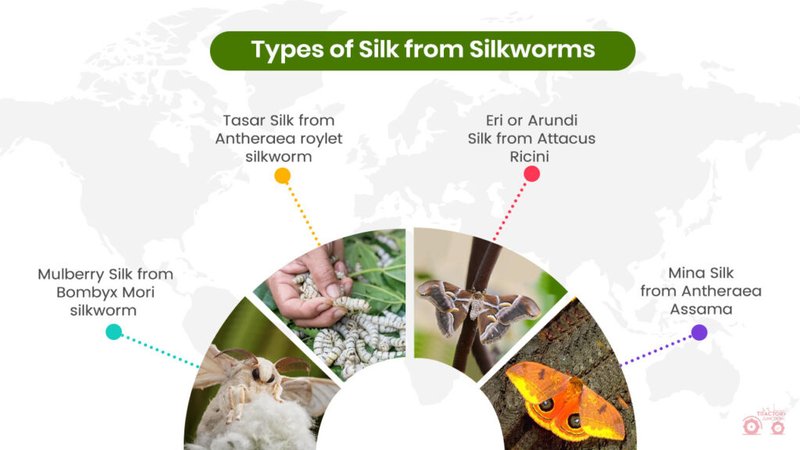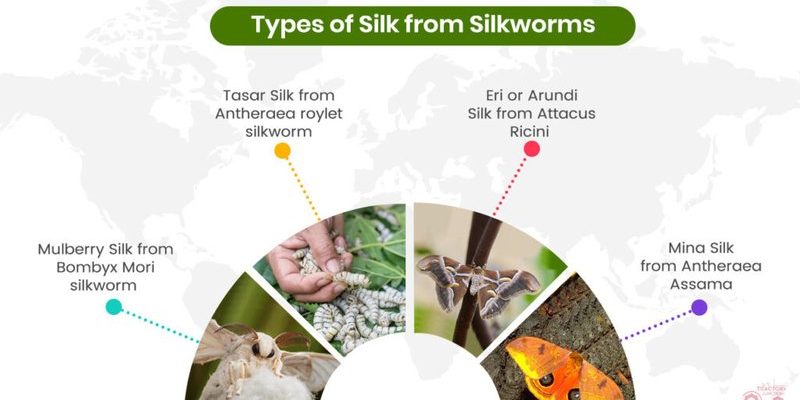
What Is Silkworm Waste?
To understand how silkworm waste can function as organic fertilizer, we first need to clarify what it is. Silkworms, specifically the larvae of the *Bombyx mori* moth, produce waste as they consume mulberry leaves. This waste, often referred to as *sericiculture waste* or *silkworm manure*, can be collected after the rearing process ends.
You might be picturing a messy farm or an intricate process, but collecting silkworm waste is quite simple. As silkworms feed and grow, they produce droppings that are rich in nutrients—particularly nitrogen, phosphorus, and potassium, which are essential for plant growth. Just like how compost enriches soil, silkworm waste can contribute to healthier plants and better yields.
Benefits of Using Silkworm Waste in Gardening
The idea of using silkworm waste as an organic fertilizer is not just a whim; it comes with some real benefits. First and foremost, it’s packed with nutrients.
- Nitrogen: Crucial for leafy green growth.
- Phosphorus: Supports strong root systems and flowering.
- Potassium: Helps plants resist disease and thrive in less-than-ideal conditions.
The balance of these nutrients makes silkworm waste an appealing option for gardeners. Plus, it has a lower environmental impact compared to synthetic fertilizers, which can leach harmful chemicals into the soil.
Another big plus is how quickly it breaks down. Unlike some organic fertilizers that take time to decompose, silkworm waste can blend into the soil more rapidly, letting plants take up nutrients quicker. It’s almost like giving your plants a nutrient boost when they need it most!
Myth or Fact: Is Silkworm Waste Effective?
Now, let’s tackle the big question: is using silkworm waste effective as fertilizer? Here, the science says yes! Research has shown that silkworm waste can contribute to increased soil fertility and higher crop yields.
But effectiveness can depend on various factors, such as the type of soil you have, the specific plants you’re growing, and how you apply it. Here’s the thing: it might not be a miracle cure-all, but it certainly provides benefits.
For instance, studies have demonstrated that crops like tomatoes and peppers can thrive with silkworm waste. They might even produce better yields than crops grown with standard fertilizers. So, while it’s not a magic solution, there’s definitely value in giving it a try!
How to Use Silkworm Waste as Fertilizer
If you’re curious about trying silkworm waste in your garden, it’s pretty straightforward. Here are some steps to get you started:
1. **Collecting the Waste:** Gather silkworm waste from reputable sources, ensuring it’s clean and free from contaminants.
2. **Preparation:** You might want to dry the waste a bit before applying it. This helps with storage and makes it easier to handle.
3. **Application:** Mix it into your soil or use it as a top dressing around plants. A little goes a long way—about one cup per square foot is a good starting point.
4. **Watering:** After applying, water the area lightly. This helps activate the nutrients and allows them to reach plant roots quickly.
By following these steps, you’re not only using a waste product but also supporting sustainable gardening practices. It’s a win-win!
Potential Drawbacks to Consider
While the benefits of silkworm waste as fertilizer are appealing, it’s essential to discuss some potential drawbacks as well.
First and foremost, **availability** can be an issue. Depending on where you live, silkworm waste might not be readily accessible, limiting your use. Additionally, the quality can vary. You’ll want to ensure it’s sourced from a trustworthy supplier to avoid contamination.
Another aspect is the *odor*. Some people might find the smell unappealing, especially if you’re applying it in large quantities. It’s like compost, but not everyone is a fan of that earthy aroma!
Also, keep in mind that while it provides essential nutrients, it might not cover all of a plant’s needs. You might still have to supplement with other fertilizers or soil amendments to achieve optimal growth.
Comparing Silkworm Waste to Other Organic Fertilizers
You might be wondering how silkworm waste stacks up against other organic fertilizers. Let’s take a quick comparison with some common ones.
1. **Compost:** Compost takes longer to break down and mature, while silkworm waste is ready for use sooner. Compost is versatile, but silkworm waste often has a more concentrated nutrient profile.
2. **Manure:** Animal manure is another popular organic option, but it can carry diseases if not properly processed. Silkworm waste, being a product of a controlled environment, usually poses less risk in that regard.
3. **Fish Emulsion:** This is a liquid fertilizer rich in nutrients, but like silkworm waste, it can be smelly. Silkworm waste is easier to incorporate into the soil without the risk of runoff, thanks to its solid form.
In essence, silkworm waste holds its own against these alternatives and could be a unique addition to your gardening toolkit.
Final Thoughts on Silkworm Waste as Fertilizer
In conclusion, silkworm waste as organic fertilizer is a concept that definitely deserves some attention. With its nutrient-rich profile and eco-friendly nature, it offers a compelling option for gardeners looking to enhance their soil without relying on harsh chemicals.
While it might not be the golden ticket to a perfect garden, it certainly brings valuable benefits worth exploring. So, whether you’re a seasoned gardener or just starting out, don’t hesitate to experiment with silkworm waste in your gardening routine. You could be surprised at how well those little caterpillars can help your plants thrive!

